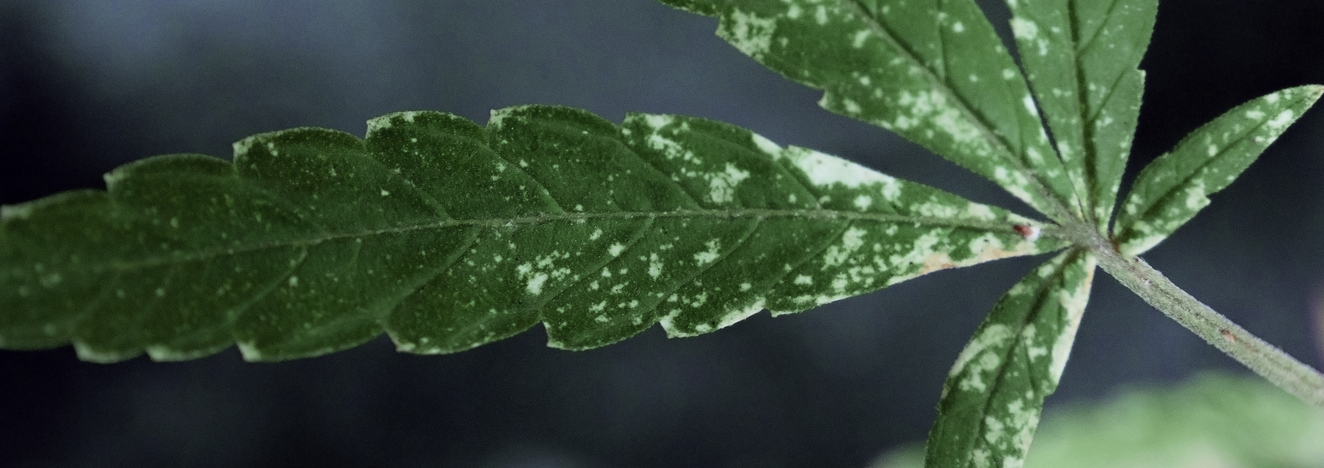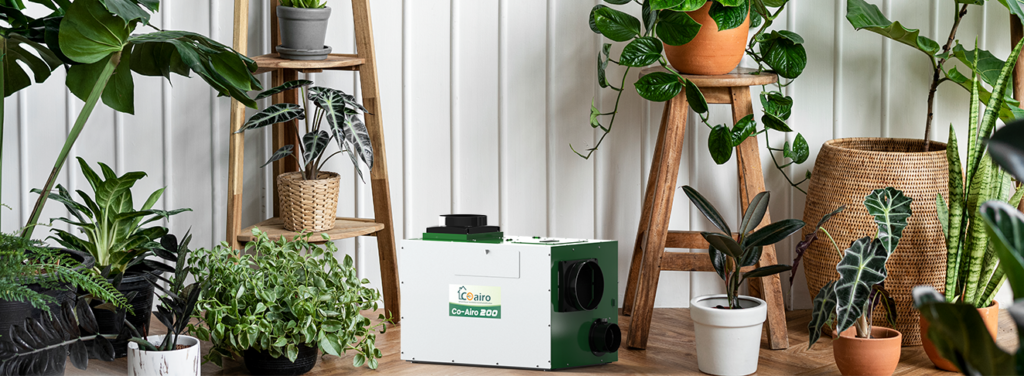Powdery mildew on cannabis is one of the most common and damaging fungal diseases, especially for indoor growers. Because it mainly affects both plant health and overall yield. For cannabis cultivation, early detection is the most effective strategy against powdery mildew. If not, this fungal infection can spread rapidly and potentially destroy the entire harvest.
This article will guide you on how to recognise early signs of powdery mildew on cannabis. It is helpful to understand the best environmental practices for controlling it and identifying effective prevention methods. By taking early action and controlling humidity, you can protect your buds, maintain a healthier plant, and take a higher yield. This article is helpful for both beginners and experienced cultivators to take protective practices against cannabis mildew and mildew on cannabis buds.
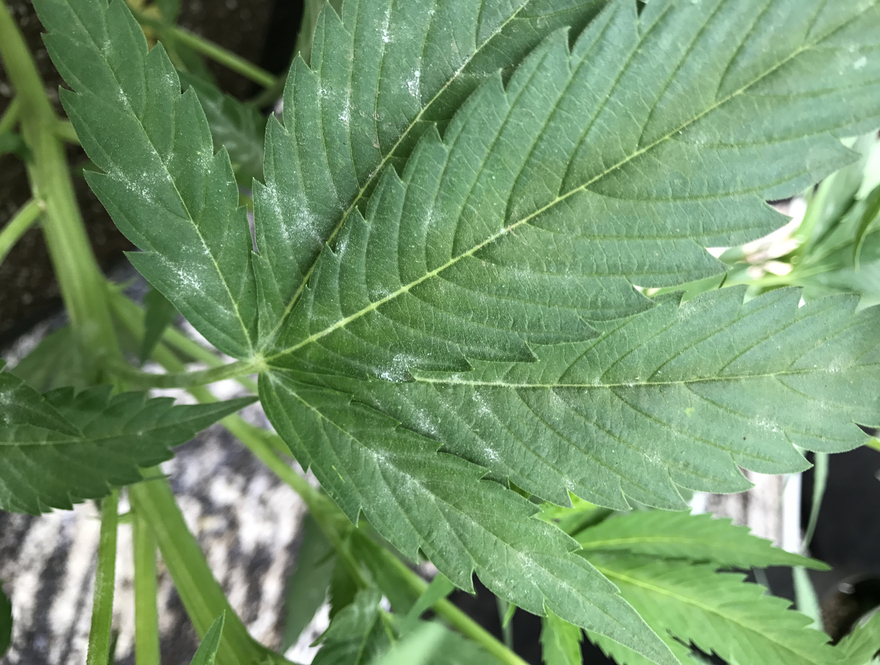
Left Image:
Early-stage powdery mildew on cannabis. Look for the small white spots appearing on the leaves.
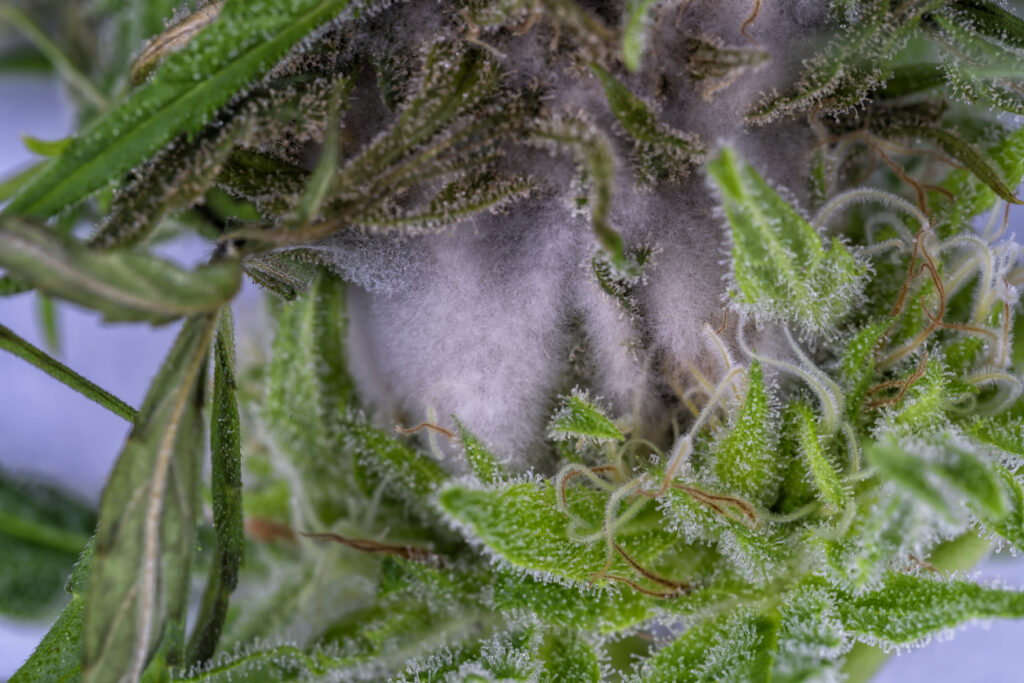
Right Image:
Cannabis infected with Botrytis (Bud Rot). Notice the white, web-like mold covering the buds.
How to identify powdery mildew early?
Early symptoms of powdery mildew
Inspecting the signs of early-stage powdery mildew allows cultivators to identify and treat the disease before it spreads out of control. Below is a clear and accurate list of early symptoms of powdery mildew on weed plants. It helps cultivators to take fast and effective actions.
Stage 1 White or Grayish-White Mildew Spots
The spots vary in size, but they are all powdery in texture, like chalk or dust. Additionally, they may wipe off easily but return quickly. Many cultivators identify this as white powdery on cannabis leaves in the early stages.
Formation of Leaf Veins and Flower Buds
In high-humidity conditions, mildew on cannabis buds often begins along the leaf veins, where moisture accumulates. Hence, they may also appear on flower buds. Additionally, they appear as a fine, powdery coating.
Stage 2 Spreading Patches
At that stage, these patches expand into large patches. Therefore, they spread across fan leaves and sugar leaves. This is the most common sign of powdery mildew on cannabis leaves.
Stage 3 Leaf Damage
Infected leaves lose colour, which means they turn yellow, wilt, curl, and eventually die as the fungus grows.
Stage 4 Advanced infection
At the final stage, buds also become infected. Therefore, buds turn grey or white and become mushy. Furthermore, they become unsafe for consumption. It is a severe form of mildew on cannabis buds.
Effective Measures to Control and Prevent the Spread of Mildew
Early detection and sudden action are essential to protect your cannabis plants from powdery mildew. Because when identified early, this fungus is much easier to manage. Therefore, measures can be taken to prevent the spread of the fungus, reducing the risk of serious damage to your buds. Below are listed some practical and effective strategies to control and prevent the spread of mildew in cannabis plants:
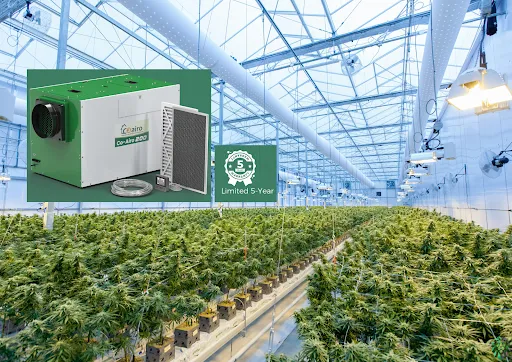
Pruning infected parts
Remove infected leaves, flower buds, or branches as soon as they are detected. This method prevents the cannabis mildew from spreading to healthy parts of the plant. Additionally, remember to disinfect your pruning tools to avoid cross-contamination.
Control Humidity and Temperature
Temperature and humidity are key factors in preventing powdery mildew on cannabis. High humidity levels create a perfect environment for powdery spores to germinate and spread. However, low humidity can slow down the fungal growth. Additionally, temperature fluctuations can affect the rate of mildew development. Due to these reasons, maintaining a stable environment with controlled humidity and moderate temperatures can significantly reduce the risk of powdery mildew. Hence, it ensures healthier leaves, buds, and overall plant growth.
How Coario Greenhouse Dehumidifiers Help
Special care should be taken to use efficient and dependable humidity control equipment when growing cannabis, especially indoors. This guarantees optimal yields and better plant health. Coario Greenhouse Dehumidifiers are designed to help growers maintain optimal humidity levels by efficiently removing water vapour.
Increase air circulation
Proper ventilation methods can reduce accumulation and lower the conditions favourable for powdery mildew growth in weed plants. Use fans, exhaust systems, or ventilation equipment to maintain steady air circulation. Additionally, ensure spacing between plants to avoid overcrowding and micro-climates. Proper spacing allows all the plants to receive sufficient airflow.
Use appropriate fungicides
For plants already showing powdery mildew on buds or leaves, chemical fungicides can be applied. Some commonly used options include:
- Sulfur Powder: Highly effective against powdery mildew. However, it should not be used during high temperatures.
- Chlorothalonil: Provides broad-spectrum control. It is suitable for both prevention and treatment of fungal infections.
- Triazole Fungicides: These are effective against a wide range of plant diseases and offer long-lasting protection when used according to instructions.
Spray treatment
When using fungicides, it is important to spray them into the affected areas evenly. These chemicals should be sprayed to include the underside of leaves and flower buds, where powdery mildew often develops first. Additionally, care should be taken to ensure every infected spot is covered to prevent the fungus from spreading further. This minimises pesticide residue and ensures that the treatment is effective. It’s best to spray in the early morning or late evening, avoiding the heat of the day, which can cause rapid evaporation.

Natural Control Methods
Some cultivators prefer natural methods against powdery mildew on cannabis. Given below is a summary of some organic methods to reduce the growth and spread of cannabis mildew.
Garlic spray
Garlic has natural antibacterial and antifungal properties that help prevent powdery mildew on cannabis. To make a spray, first crush a few cloves. After that, soak the crushed garlic paste in water. Afterwards, this mixture is sprayed onto the leaves and buds where white powdery mildew is starting to appear. This natural solution helps to slow down the growth of mildew on cannabis buds.
Milk solution
Milk solution contains lactic acid that can naturally suppress powdery mildew on cannabis buds. It is usually made with one part milk to 10 parts of water. Afterwards, it is sprayed on affected leaves. This simple solution works well against early signs of powdery mildew on weed plants. As a result, milk solution helps to prevent mildew on cannabis from spreading in high-humidity areas.
Vinegar solution
Another organic option is a vinegar and water solution. Mix white vinegar with water at a 1:3 ratio. Afterwards, this solution can be sprayed on infected areas. This can help reduce powdery mildew on pot plants and create an environment where the fungus struggles to survive. Pair this with good ventilation and proper dehumidification for the best results.
Conclusion
Early detection and proper humidity control are the most effective ways to prevent powdery mildew on cannabis. By following the simple steps such as monitoring environmental conditions, removing infected areas, improving airflow, and using reliable dehumidification tools, growers can detect and prevent mildew before it spreads. With consistent preventive care, your cannabis plants will stay healthier and produce stronger, higher-quality yields.
